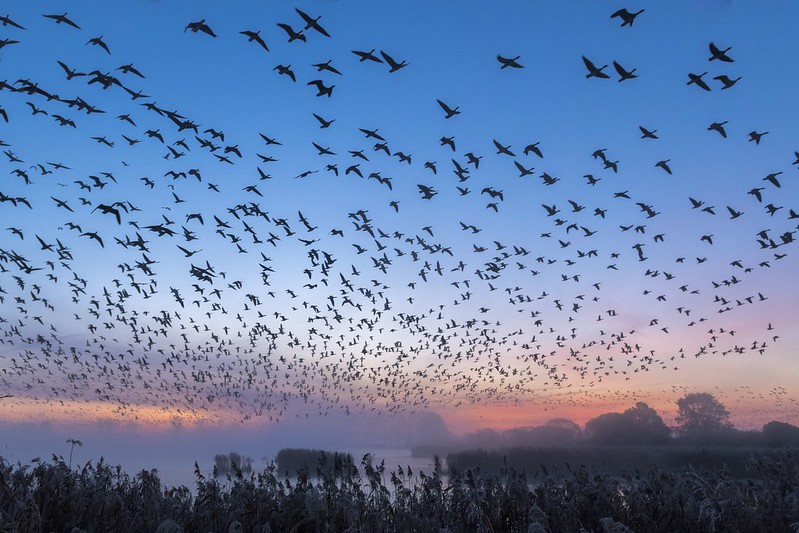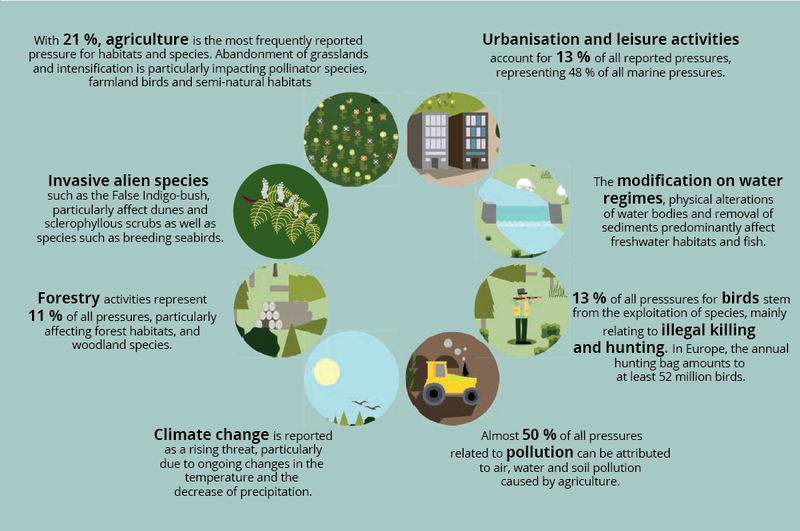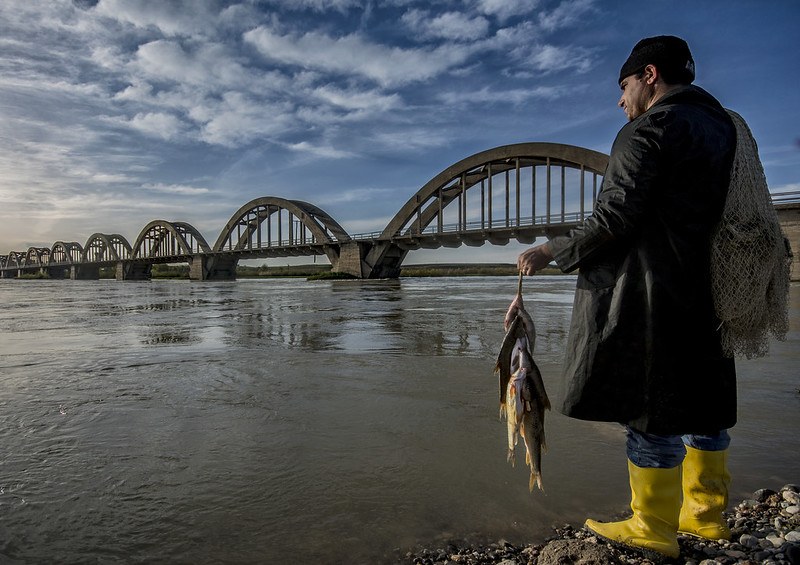The European continent is home to a wealth of habitats and species — both land-based and marine. Centuries of human activities, however, have taken a toll on Europe’s biodiversity. Our nature has been transformed and heavily impacted, with most of Europe’s species and habitats facing an uncertain future unless urgent and more ambitious action is taken.
Despite some progress, most protected habitats and species have either poor or bad conservation status. Destruction of habitats, overexploitation of resources, pollution, climate change, the introduction of invasive species, urban sprawl and landscape fragmentation are only some of the reasons behind this decline, which affects terrestrial and aquatic species, their habitats and ecosystem services.
The good news is that there are signs of recovery in some areas thanks to ongoing efforts to reduce certain impacts, such as those caused by contaminants, eutrophication and overfishing in marine ecosystems.
Awareness of the importance of biodiversity is also growing and many initiatives and policies are already in motion. Both the number and area of protected sites under the EU’s Natura 2000 network have increased. With new legislation like the Nature Restoration Law, Europe wants to strengthen its efforts not only to preserve and protect but also to restore Europe’s nature.
Two-thirds of the species protected under the Habitats Directive in the EU have poor or bad conservation status. Land and sea changes, overexploitation, and unsustainable management practices threaten Europe’s protected species. Air, water and soil pollution also contribute.
Our report 'State of Europe's Nature 2020' shows that:
- Whilst 47% of 463 bird species in the EU are in good conservation status, 39% are in poor and bad conservation status.
- Three-fourths of habitats assessed have poor or bad conservation status.
- Half of the dunes, bogs, mires and fens have bad conservation status.
-
Protected areas require further conservation measures: 215,000 km2 (approximately 5%) of EU-27 habitats must be improved.
- Birds and other species are receiving increased protection through Natura 2000, a network of core breeding and resting sites for rare and threatened species in the EU.
The use of Europe's seas — both in the past and today — is also taking its toll on the overall condition of marine ecosystems. This puts expectations for their future use at odds with the long‑term policy vision for clean, healthy and productive seas.
Starting with the key nature directives (Habitats and Birds Directives), EU Member States have been conserving habitats and species for decades. Progress has been made, but current trends show that Europe needs a more comprehensive and ambitious approach.
To this end, the EU adopted the biodiversity strategy for 2030 — one of the key components of the European Green Deal. This long-term plan aims to protect and restore nature and reverse ecosystem degradation. The strategy also aims to put Europe's biodiversity on a path to recovery by 2030 to benefit people, the climate and the planet. To achieve this, the strategy presents the steps needed for this transformative change.
Goals set in the 2030 biodiversity strategy include:
- Increasing organic farming by 25%;
- Restoring at least 25,000 km of rivers to a free-flowing river;
- Protecting at least 30% of the EU’s land and 30% of its sea;
- Incorporating biodiversity reporting into businesses and guiding investments toward greener options;
- Making the EU the global leader in restoring biodiversity and pushing for the EU 2030 targets to be incorporated at the global level — which already happened at the UN Biodiversity conference COP15 in Montréal, Canada..
Other policy initiatives include the Farm to Fork strategy, the circular economy action plan and the EU strategy on adaptation to climate change, which are all core elements of the European Green Deal.
Recently, the European Union adopted the Nature Restoration Law, which aims at intensifying and accelerating the efforts to improve the conservation status of the habitats targeted under the Habitats and Birds Directives. It also sets targets for the restoration of additional habitats and ecosystems outside the Natura 2000 network.



